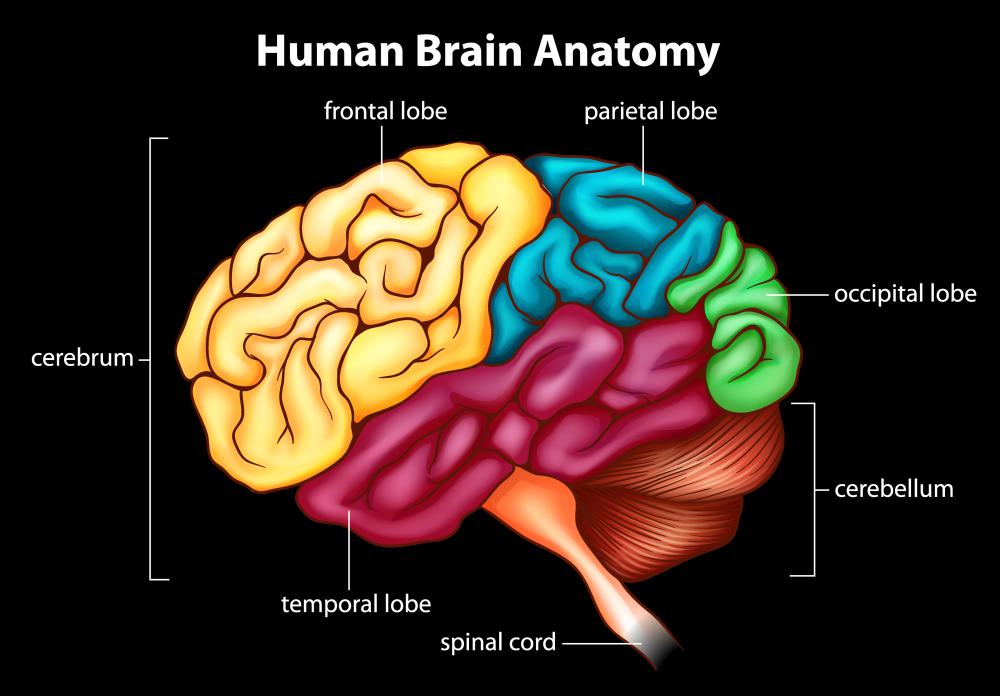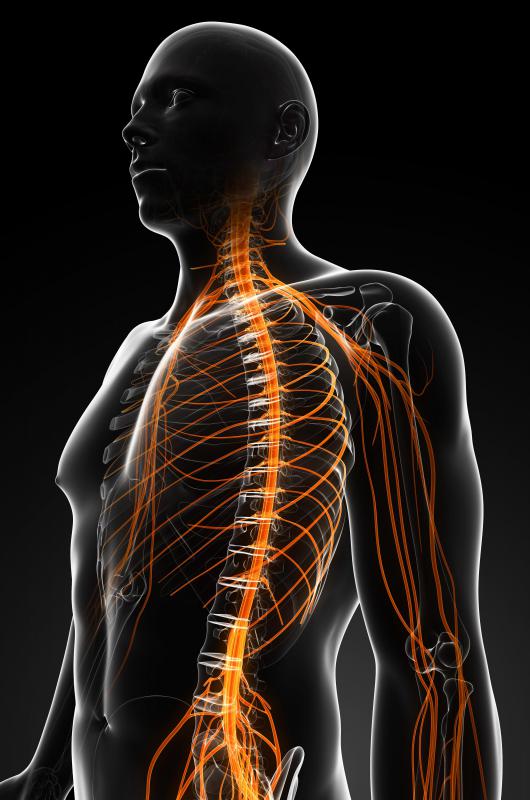At TheHealthBoard, we're committed to delivering accurate, trustworthy information. Our expert-authored content is rigorously fact-checked and sourced from credible authorities. Discover how we uphold the highest standards in providing you with reliable knowledge.
What Is the Relationship between the Spinal Cord and the Nervous System?
The spinal cord and the nervous system are related in the sense that the spinal cord, along with the brain, is a component of the central nervous system (CNS). In the CNS, information picked up by the system of nerves and receptors throughout the body known as the peripheral nervous system (PNS) is interpreted. The CNS also sends signals out to the PNS in response to this information. As a major component of the CNS, the spinal cord delivers signals from the PNS to the brain as well as transmits impulses from the brain to the PNS, impulses that tell the legs to take a step or the hand to snatch back from a hot surface.
A thick stem of nerves running from the base of the skull to approximately the second lumbar vertebra in the lower back, the spinal cord is made up of chains of nerve cells known as neurons, which conduct electrical impulses, encased by several layers of protective tissue. These include the pia mater, the innermost of the meninges or membranes; the arachnoid mater, the middle, web-like layer; and the dura mater, the dense outer membrane. To the outside of the dura mater in the space between it and the vertebral bone surrounding it is the epidural space, which contains adipose tissue or fat and blood vessels. These cushion the nervous tissue against the bone and supply it with oxygen and nutrients, respectively.

Beginning at the base of the brainstem where it arises from the medulla oblongata, the spinal cord exits the skull through an opening called the foramen magnum. It then enters the spinal column, a stack of interlocking vertebral bones: seven in the cervical region, 12 in the thoracic region, five in the lumbar region, and the fused sacrum and coccyx bones in the posterior pelvis. The spinal cord passes through the atlas, the vertebra immediately beneath the skull, and the column of bones beneath it via a hole just posterior to the body of each vertebra known as the vertebral foramen. It continues until the height of roughly the second lumbar vertebra, ending in the filum terminale, a narrow length of nervous tissue that continues through the sacrum and coccyx.

At each vertebral segment the spinal cord puts out a pair of nerves, 31 in total, that exit the vertebral column to innervate every major tissue and organ in the body. As the spinal cord and the nervous system as a whole function to transfer information between the body and brain, these paired nerves carry signals in two directions. Afferent nerves transmit nerve impulses from the body up the spinal cord and toward the brain, while efferent nerves send information from the brain back down the spinal cord to the body.
AS FEATURED ON:
AS FEATURED ON:
















Discuss this Article
Post your comments